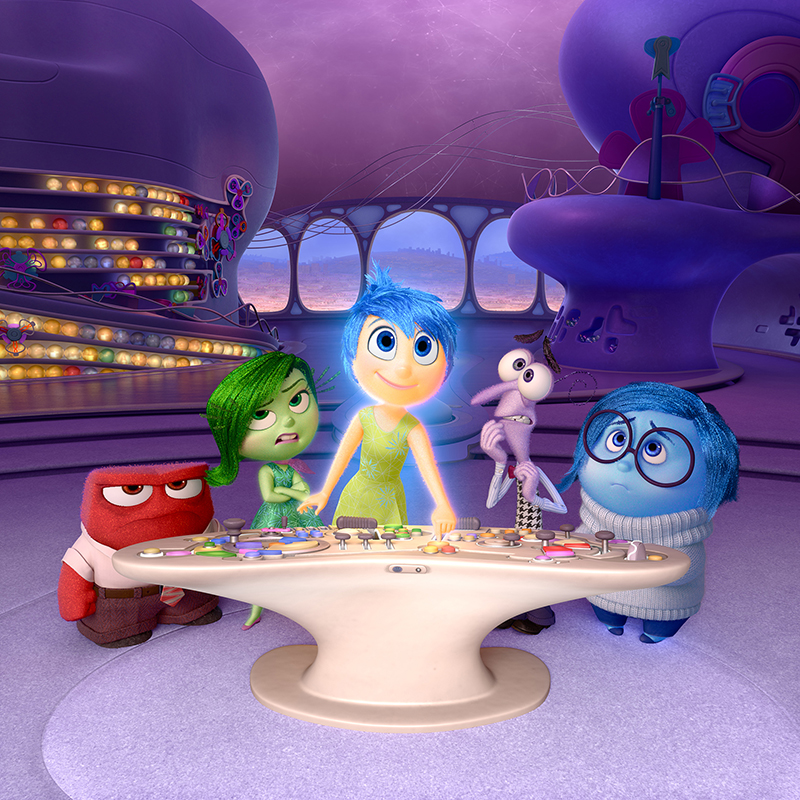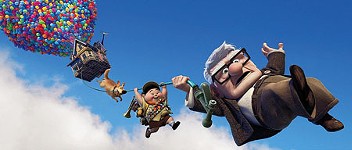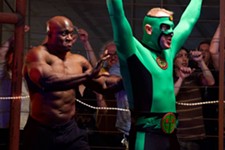The Medium Is the Message
The co-director of Pixar's Inside Out talks shop
By Marc Savlov, Fri., June 19, 2015
There have been plenty of notable names in animation over the past century-plus, sure. Chuck Jones, Walt Disney, Hayao Miyazaki, Tim Burton, Will Hanna (of Hanna-Barbera fame), The Iron Giant's Brad Bird, and, of course, the legendarily unstoppable stop-motion mastermind Ray Harryhausen immediately come galloping giddily to mind. With the ascendancy of CG animation in the mid-Nineties, a newfangled hybrid of classic storytelling and eye-popping visuals emerged. You can thank Pixar's blockbusting (literally) Toy Story for that shot across traditional cel-animation's bow, and you can especially throw kudos to one of the company's star writers and directors – Pete Docter, of Monsters, Inc. and Up fame – for never letting all those snazzy computer graphics get in the way of telling what always turns out to be an all-too-human tale. Docter's not just one of the best animation directors and writers around, he's one of the best filmmakers ever to come out of Hollywood, live-action or otherwise.
The Austin Chronicle spoke with Docter, prior to the release of his new film Inside Out, about his career at Pixar, the relevance of traditional animation in an ever-more CG Hollywood landscape, and the future of animation in general.
Austin Chronicle: How has the art of animation changed, for you, in the two decades since Toy Story put Pixar on the map?
Pete Docter: I think in some sense I think less and less about the technical. In the beginning that was a real concern because there were obvious limitations to what we could do and what we couldn't. Back then we had to think very creatively about how to get around some of that stuff. Now, as a writer, I feel that there are certain things that we can do, in the kinds of films that we make, the stories that we tell, and the characters that we make that we probably couldn't do in live action. At least, things that we'd have to approach in a different way.
What Toy Story taught us was to focus on the storytelling and the characters, and all the rest will fall in line. [Executive Producer Ed Catmull] tells a story about how he knew he had succeeded because when the film came out, nobody talked about the technology and they didn't review the rendering, they just talked about the characters and did so as though they were real people. And that was awesome because that's what we had set out to do.
AC: Each film since Toy Story has looked distinctive from the previous film, and yet each one has a certain Pixar imprimatur that marks it. There doesn't appear to be an in-house style, really. Has Pixar fundamentally changed its own style of animation in the intervening years?
PD: I'm happy to hear you say that! I know that some people feel as though our stuff looks kind of consistent or similar to itself, but we're trying to push things forward with every film. Obviously, it has to be appealing to people when you look at it, but, as we try to do, Up looks very different from The Incredibles, which looks very different from Inside Out. That's important to us, to try and give people something different and something kind of new.
AC: I know you're a fan of Japan's animation powerhouse Studio Ghibli and its co-founder Hayao Miyazaki, who retired relatively recently. Do you think there will still be room – or a desire for – old-school, hand-drawn cel animation of that sort in the future? Or will a generation that has grown up with mainly digital animation at their local cineplex find that too old-school, or not "realistic" enough?
PD: Oh, man, I hope not. I love it. But I have no idea. For me, personally, it still speaks loud and clear. There's something about that fact that a person made these marks that express so much. In [the Studio Ghibli film] The Tale of Princess Kaguya there's this scene where she runs away and there's just this, wow, element of "I can just feel that." It's so good! And I don't know that we can ever get that with CG. I mean, we can do other things better than hand-drawing can do, but there are definitely things that hand-drawing can do better than CG. I gotta say that when I talk to young artists, there are a lot that say, and now more than ever, that they're really into anime and love what it brings to their lives for whatever reason. So I hope that [hand-drawn animation] is going to stay around in some way. But who knows? Fifteen years ago, I would have said that the 2-D animation that Disney was doing would have stayed around, too. It hasn't, but maybe it'll come back.
AC: There's also been the advent of the whole Adult Swim-style of animation, going back to their repurposing of old Space Ghost episodes from the Sixties for meta-comedy.
PD: Yeah, and each one of those brings something specific and unique to what it is they're talking about. I mean, you can get away with certain things in The Simpsons that you couldn't get away with in a live-action cast. There's that sense of absurdity, and extremity, and caricature that is really fun. And [The Simpsons] has been around as long as I've been at Pixar.
AC: Has the role of animation, not just Pixar, but animation as a whole, changed since the 1900s when Little Nemo and Gertie the Dinosaur arrived? Obviously, animated films like Animal Farm and, again, Richard Linklater's forays into rotoscoped animation are more than mere entertainment.
PD: I don't mean to be depressing, but even back when Winsor McCay was doing Little Nemo, he quit because he kind of felt that, even then, animation was being marginalized and being mass-produced and crapped out. He saw it as this great art form, something to continue to push the boundaries on. That's kind of the way that I feel we are trying to do, as a team, at Pixar. We're not doing art with a capital A, I don't think –
AC: Anyone who's seen the first 10 minutes of Up might beg to differ ...
PD: Well, that's cool to hear, but what we're after is really just saying something to people that registers with them. But the industry does it to itself sometimes. If you talk down to people then, you know, that's the way they look at it. I think animation can speak to people in a lot of different ways. Like Brad Bird likes to say, "Animation is not a genre; it's a medium." It can be used to tell stuff we've never seen before. Horror stories, even, like Richard McGuire's [segment] of [French animation anthology] Fear(s) of the Dark. You're on the edge of your seat and it's all super-graphic, but it works. Animation can do so much more than people perceive it might be able to do, you know?
AC: And it's cross-cultural and transcends even language.
PD: Exactly, right.
Inside Out opens in theatres June 19. See Film Listings for showtimes and review.














